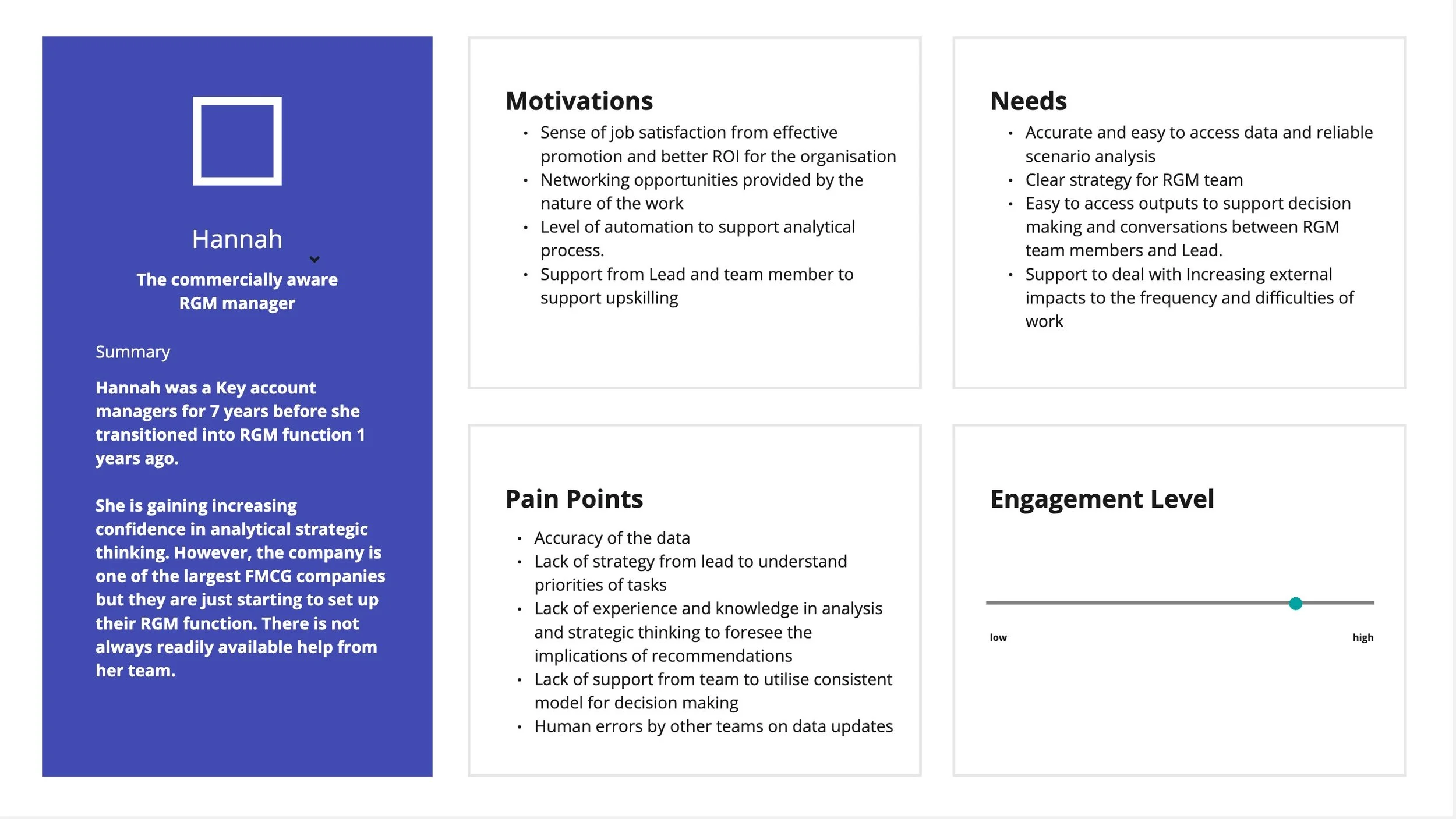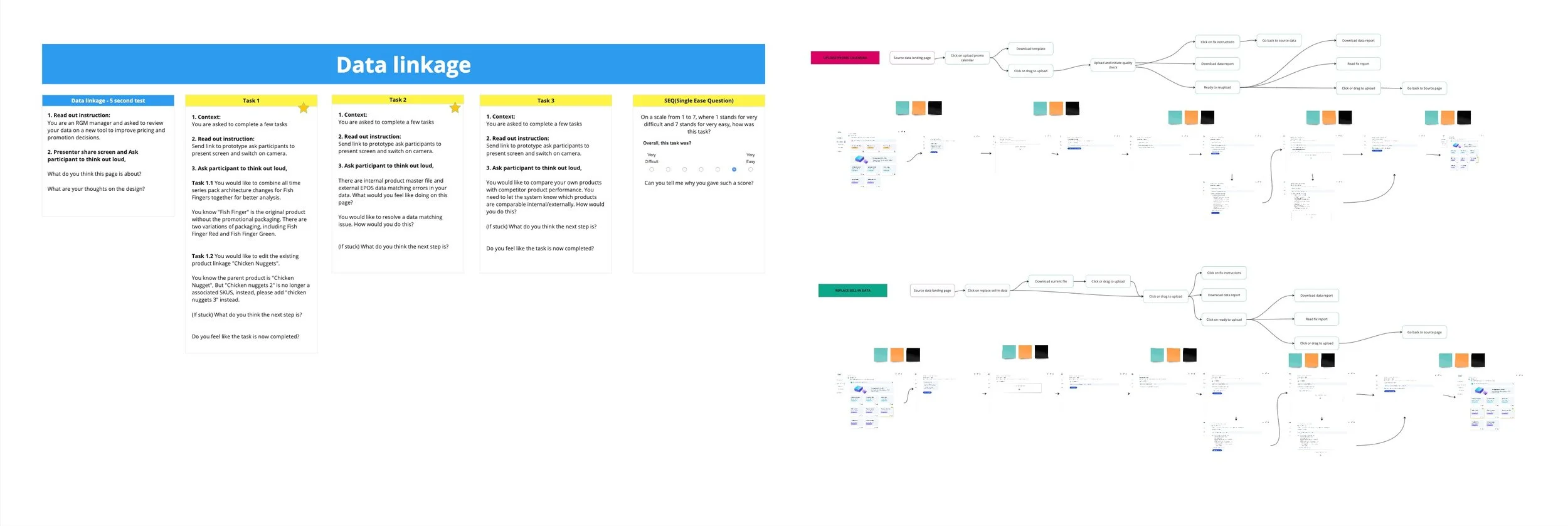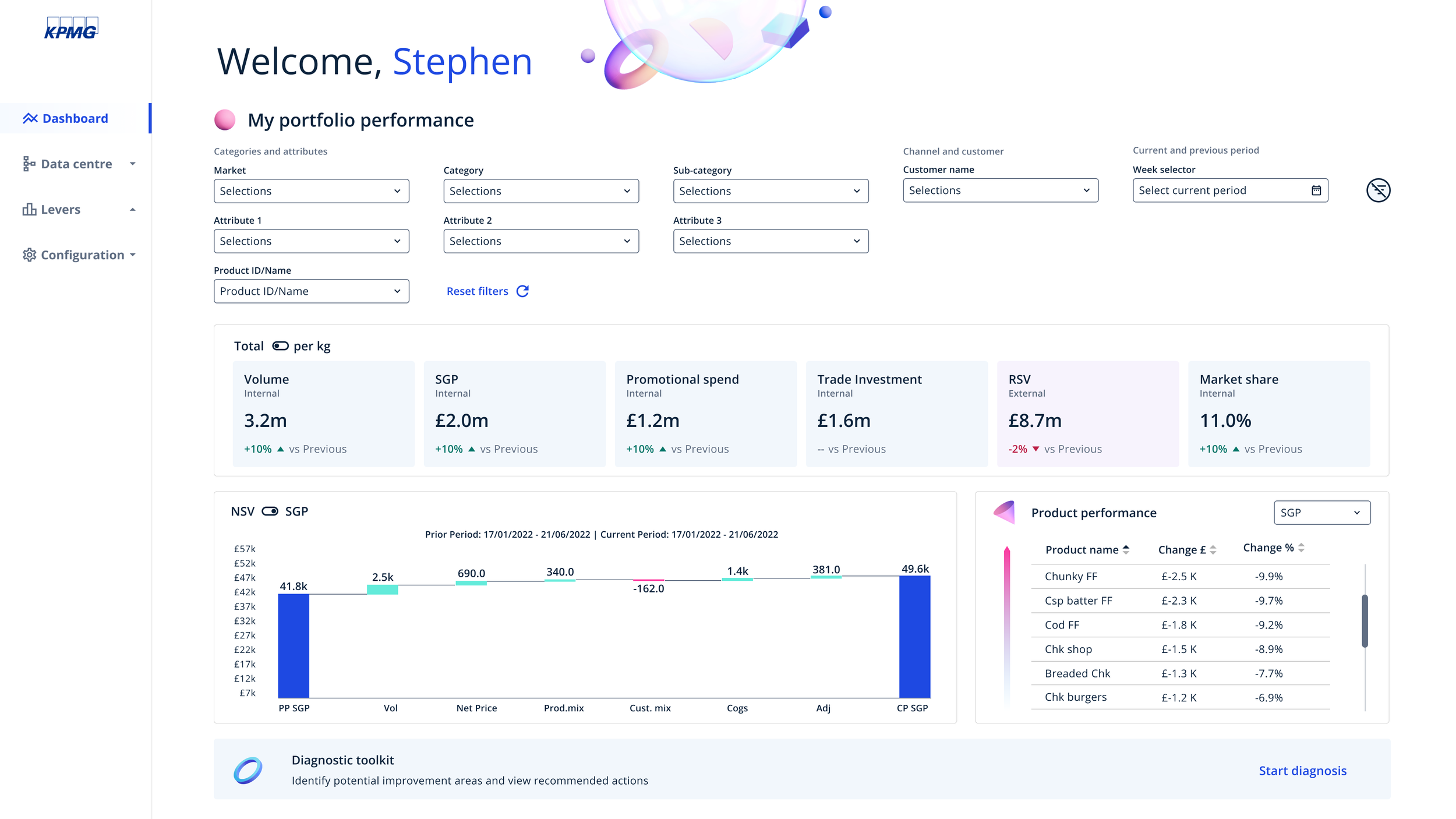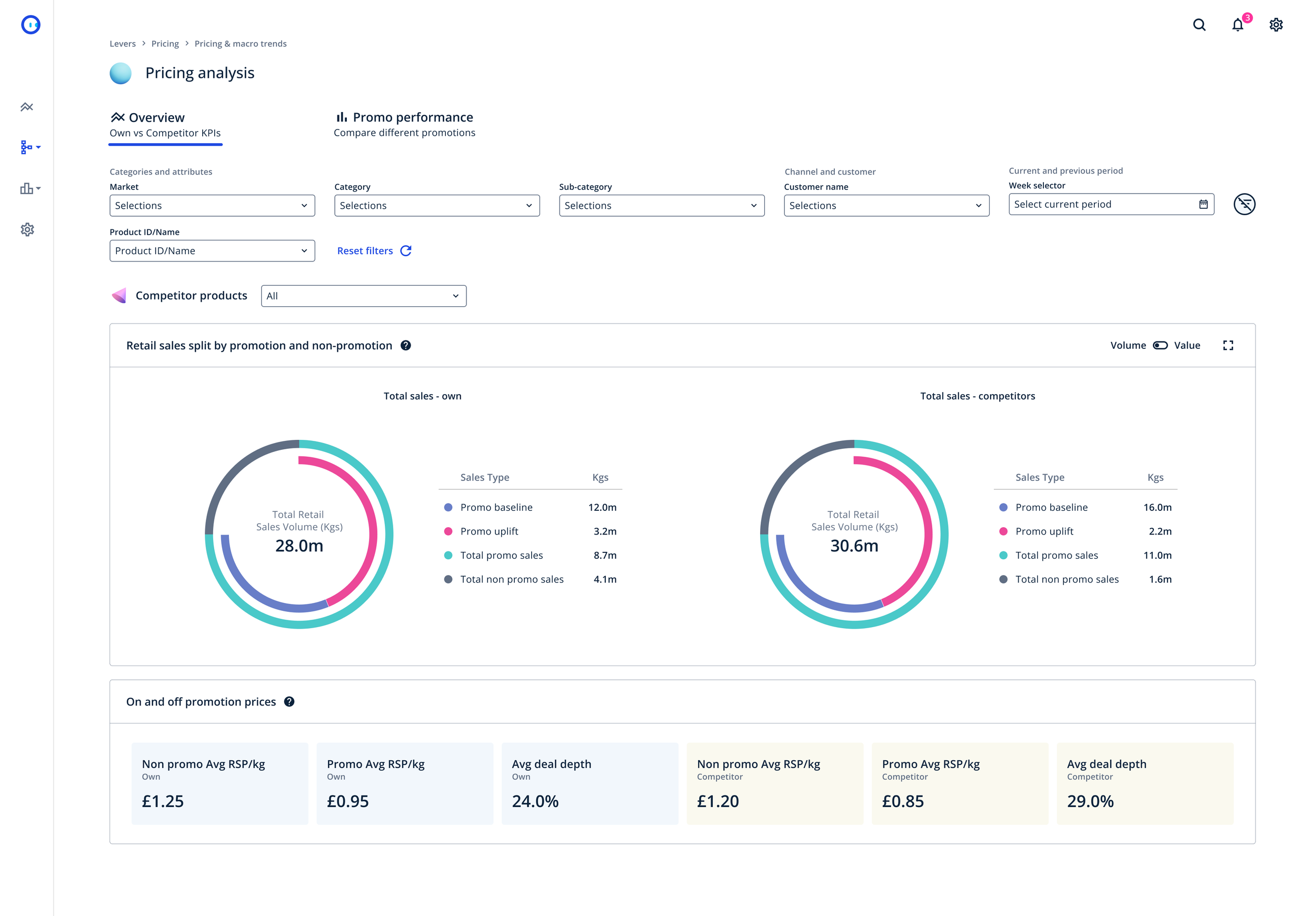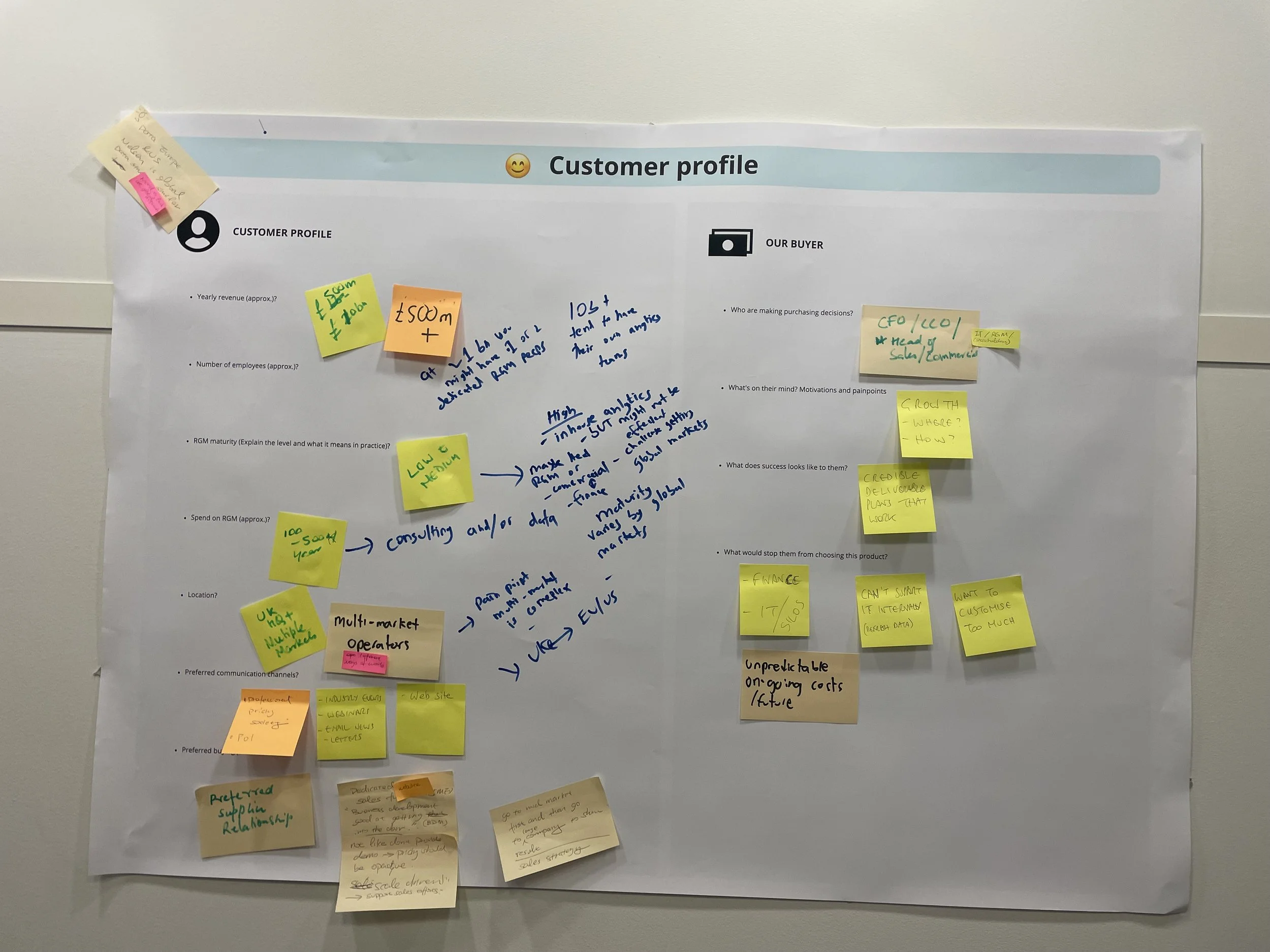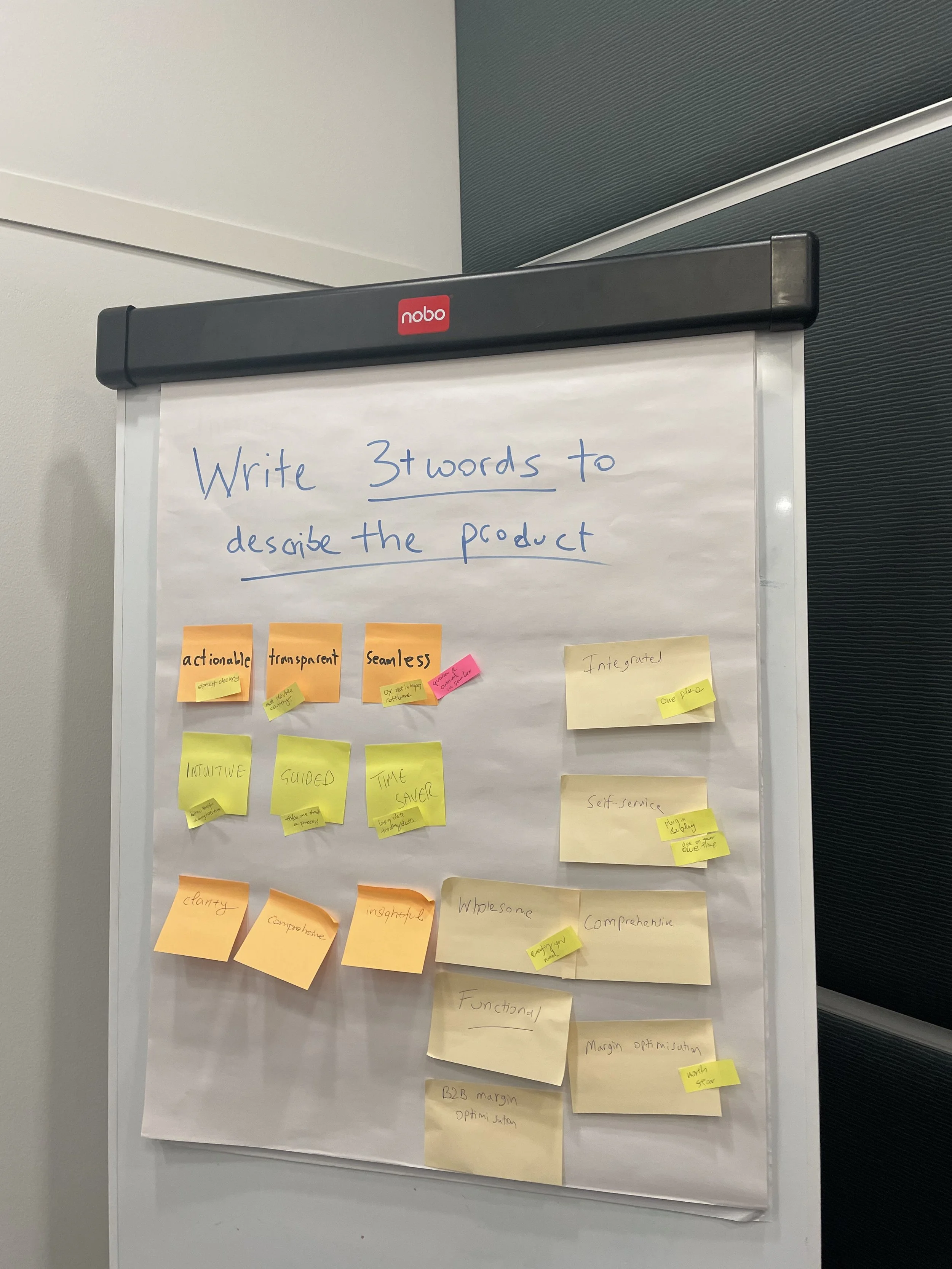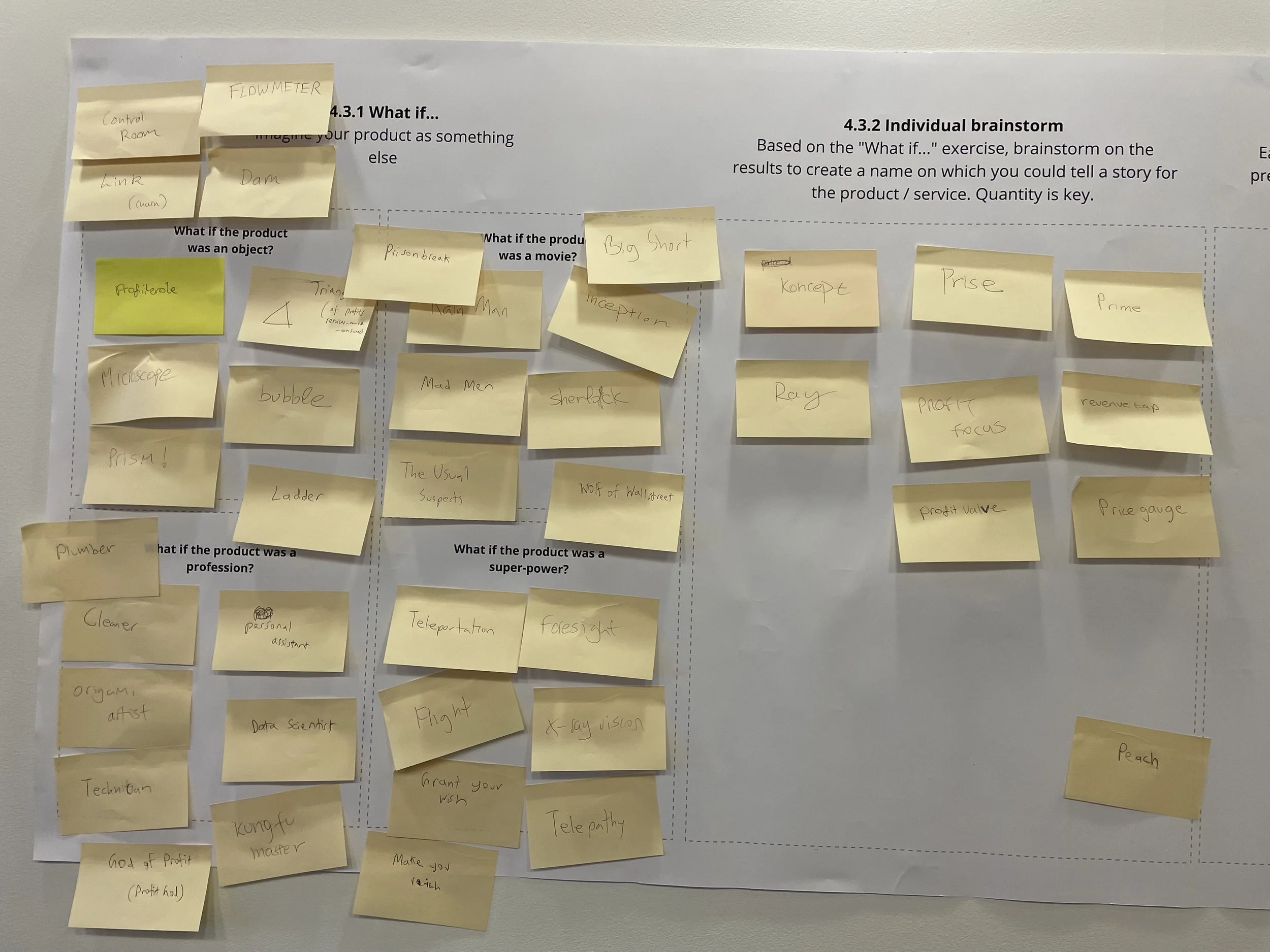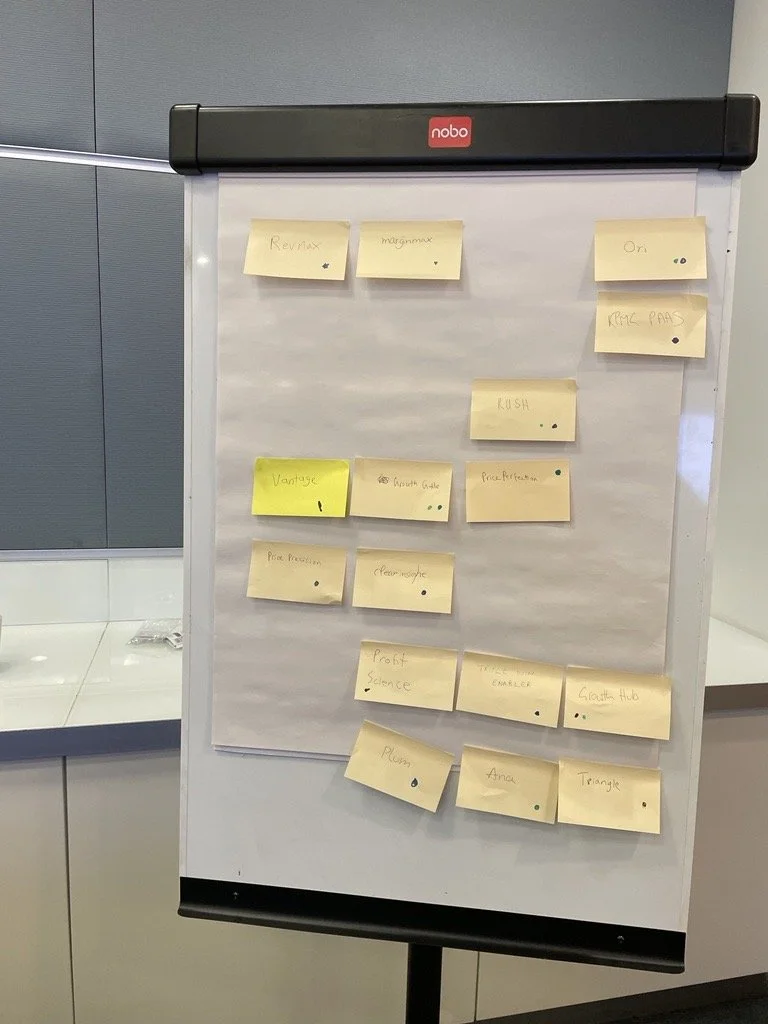KPMG Prism
Automating time-consuming data ingestion and analysis for a seamless user experience and actionable insights
The outcome
For business: we secured our first client during market validation with just the wireframes I designed. This generated £1.8 million in associated revenue. We also completed the MVP with a 50% reduction in cost and time and only 20% of the team size compared to similar products developed at KPMG.
For clients and users: A sophisticated data analysis tool to remove manual processing efforts, reduce time spent interpreting raw data, and promote consistency across the entire revenue growth team.
🧭 Context: The KPMG Pricing team has identified a product opportunity while delivering tailored consultancy services to the FMCG industry for pricing optimisation. The KPMG Product team was selected to establish a startup-style venture to validate the problem statement and bring the product vision to fruition.
📁 Responsibilities: As the lead designer, I oversaw the research, user testing, and market validation to verify the product vision, features, and design throughout the development of the MVP.
📢 Outcome: We secured our first client during market testing and successfully delivered the MVP with 50% less time and costs, utilizing only 20% of the staff compared to similar products developed at KPMG.
🛠️ Tools: Miro | Figma | After effects | ChatGPT
Chapter 1 | Research
Find a problem that is huge and painful
Understanding the problem more deeply than anyone else
First, I need to gain a comprehensive understanding of the FMCG (Fast-Moving Consumer Goods) industry and the daily challenges faced by RGM managers (Revenue Growth Management). My approach?
In-person contextual understanding workshop involving the Product Owner and subject matter experts (SMEs).
landscape research for industry context and common knowledge
The insights from the workshop and research helped us to form initial hypotheses. We synthesised these insights and hypotheses on a knowledge board, highlighting gaps and noting down questions for forthcoming user interview sessions.
Understanding who we are designing for
Based on our interview findings, we have identified three distinct personas among potential users, each shaped by their unique pathways into the field of RGM:
Category managers with good analytics and commercial awareness, but require more financial and broader customer focus.
Key account manager with sales experience who is commercially aware but wish to develop analytical skills and strategic thinking.
Finance support with good commercial awareness and strategic thinking, but need to understand impact of their decision making.
For each persona, we have developed user journeys that reflect the unique opportunities. Additionally, we have created secondary persona for our in-house consultants, recognising their significant role in supporting implementation and influencing purchasing decisions.
Chapter 2 | Ideate and learn
Assemble a team that is uniquely qualified to solve the problem
Mixed skill collaboration
Our cross-functional product team, comprising designers, engineers, a product manager, and a product owner, engaged in an intensive ideation session:
Generated ideas ranged from implementing a task-tracking system, and streamlining promotion management to integrating AI-driven recommendations for portfolio management.
Our discussions focused on identifying quick-win features with maximum impact, aligning with our MVP (Minimum Viable Product ) strategy.
User flow
Fail early and fail forward.
With a complete mid-fidelity prototype, we designed a testing script to interact with users for feature and flow validation. The insights gathered from these sessions helped us gauge the value of each component and identify any areas where our initial thinking might have fallen short. This approach allowed us to address issues early in the process and make iterative improvements to the design.
Testing session for linkage journey
Chapter 3 | Validate
Never stop speaking to your customers
Test the market early
From the onset, we knew we wanted to validate the product ideas with our existing client base at an early stage. I provided a couple of proof-of-concept high-fidelity screens to test specific features with one of our consulting clients. Their positive impression of these features directly resulted in them signing a £1.8 million contract to develop a bespoke product using their tech stack. This successful validation allowed us to demonstrate the product concept, and its features, and generate additional revenue, all supported by thorough research and a deep understanding of user needs.
“My ex-line manager regularly asks me these questions and with this tool, I’d finally be able to provide timely answers!”
Group Strategy & Planning Director, A household brand
Minimum lovable product
To enhance the user experience, we applied the Kano model to identify elements that could truly captivate and engage users throughout their journey. We created a Product Story, a pivotal element that shapes our roadmap for the MVP and beyond. By distinguishing between essential must-haves, performance benchmarks, and those extra touches that bring joy, we prioritised the most impactful components to include in the MVP. This approach not only addresses core user needs but also infuses our product with delightful surprises that set it apart from the competition.
Synchronised highlight
Chapter 4 | Make
Craft your product
Data visualisation library
Due to the project's significant emphasis on data visualisation, I have led the design team by structuring the workloads into two key areas:
Exploring various data visualisation frameworks and their specific applications, understanding best practices, available tools and techniques.
wireframes and prototypes, transitioning mid-fidelity screens into high-fidelity wireframes.
One of my biggest lesson learned also occurred here:
Users prefer dual y-axis graphs
Design, test, learn, and refine
In this project, we have adopted the Lean UX approach. We continued to evolve the product with each user testing session. To ensure the feasibility of any proposed feature updates, we conducted developer demo sessions regularly with our engineers. These discussions also aided in determining the complexity required for the data visualisation library and any necessary customisations to the front-end framework.
Chapter 5 | Release
Tell your product story
Go-to-market workshops
We convened a session that included the product sponsor team, product owner, and product manager to conduct a press release workshop. The primary goal was to gather the language and insights necessary for crafting our brand strategy canvas. Following this, we organised a product naming workshop, guiding the team through a collaborative brainstorming process. This resulted in the shortlisting of five names, ready for evaluation by our global brand team.
Marketing collateral
The strategic steps involved in creating our brand canvas and product naming have equipped us with a robust brand identity and a compelling value proposition. With this strong foundation in place, I designed our marketing materials, ensuring they are in harmony with our product narrative and resonate effectively with our target audience.
Reflections
Visualisation library
Looking back, we now realise that our decision to create a custom data visualisation library for our MVP stemmed from a desire to stand out. However, this choice presented unforeseen challenges and consumed significant time to build. In retrospect, utilising established libraries would have accelerated MVP development, enabling us to gather user feedback quickly.
Research
I proposed showcasing our high-fidelity prototype at industry conferences to validate the product concept and generate leads. I am also keen on the idea of engaging an external agency to support conducting a 5-second test for our marketing content. However, the ongoing process of supplier onboarding monitoring has delayed signing off on this. Both actions, I believe, would provide valuable insights for us.
"In terms of innovation and creativity, you are one of the best lead experience designers in the firm."
— Product Manager on KPMG Prism




